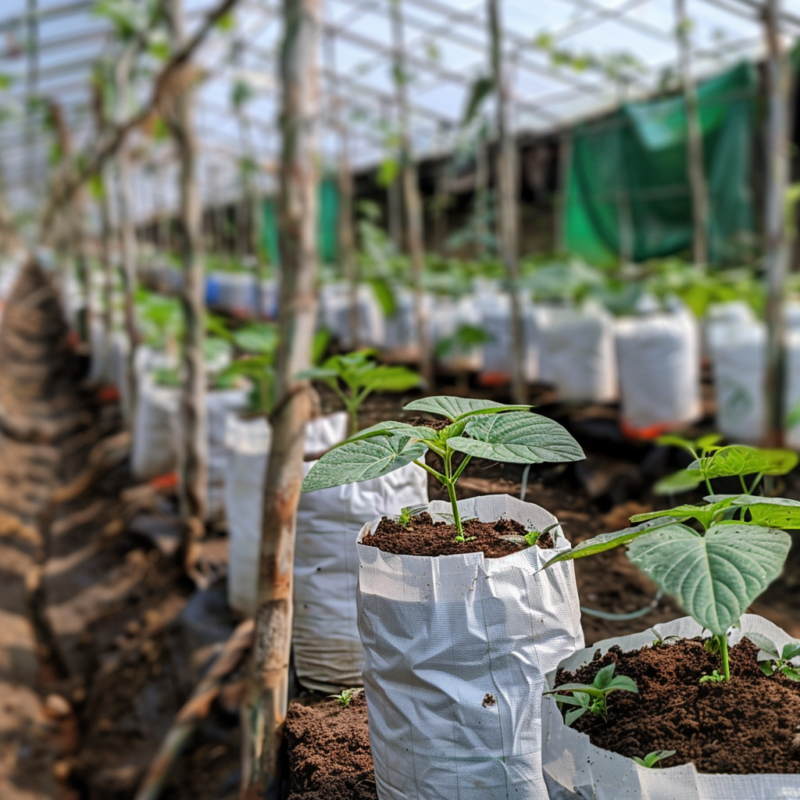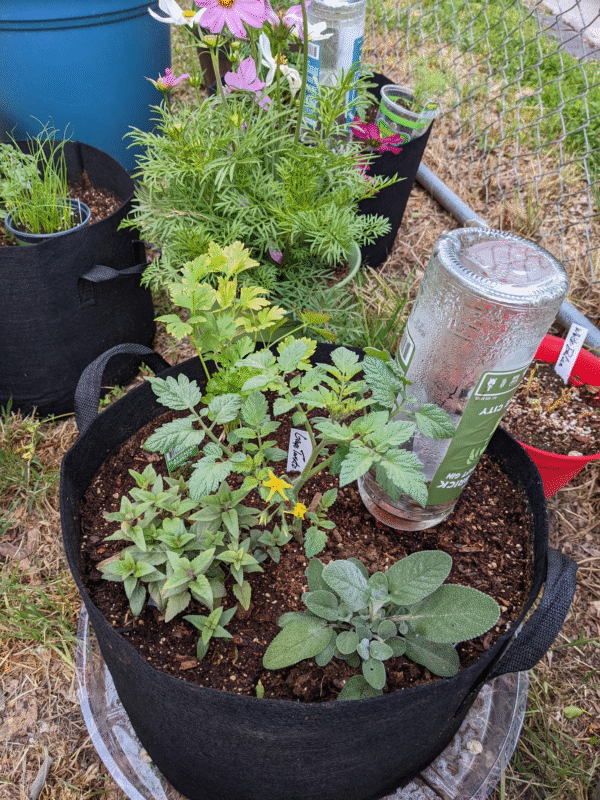Common Gardening Mistakes with Grow Bags and How to Avoid Them
Grow bags are a fantastic solution for urban gardening, offering flexibility, portability, and excellent root health. However, like any gardening method, there are potential pitfalls that can hinder plant growth. Understanding these common mistakes and how to avoid them will ensure that your grow bag garden thrives. Let’s dive into the mistakes you need to avoid.
Using the Wrong Soil for Grow Bags
One of the biggest mistakes gardeners make when using grow bags is choosing the wrong soil mix. Traditional garden soil can compact inside grow bags, leading to poor drainage and unhealthy plant roots. Grow bags require light, well-draining soil to ensure optimal growth.
How to Avoid It:
Opt for a high-quality, well-draining potting mix, preferably one with added organic matter like compost. Look for soils designed specifically for container or grow bag gardening. This ensures that your plants receive proper drainage, root aeration, and essential nutrients.

Overwatering Your Plants
It’s easy to overestimate the water needs of your plants, especially in grow bags where excess water has nowhere to go. Overwatering can lead to root rot, mold growth, and nutrient deficiencies.
How to Avoid It:
Always check the soil moisture before watering. Stick your finger about an inch into the soil to see if it feels dry or moist. If it’s dry, it’s time to water, but always ensure that the water drains out of the bag. A drip irrigation system like the GrowEatz Dripper can help manage water distribution and prevent overwatering.

Placing Grow Bags in the Wrong Location
Grow bags need sunlight to thrive, but placing them in a spot that receives too much or too little light can stunt plant growth. Some plants need full sunlight, while others prefer partial shade, so location matters.
How to Avoid It:
Assess your available space for sunlight. Full-sun plants like tomatoes need at least 6–8 hours of direct sunlight, while leafy greens like spinach and lettuce prefer partial sun. Ensure your grow bags are placed in an area that matches the light needs of your plants.

Not Using Plant Support Systems
Many gardeners neglect plant support, especially for taller plants like tomatoes and cucumbers. Without proper support, these plants can become top-heavy, causing stems to break or bend.
How to Avoid It:
Use stakes, cages, or trellises for vertical growth. The GrowEatz Plant Support Clips are perfect for securing plant stems to these supports, preventing damage and ensuring healthy growth.

Forgetting to Add Fertilizer
While grow bags offer great drainage, they also tend to lose nutrients faster than traditional garden beds. Many gardeners forget to fertilize, leading to nutrient deficiencies and poor plant health.
How to Avoid It:
Add organic fertilizer or slow-release nutrient tablets like the GrowEatz Fertilizer Tablets to your grow bags regularly. This will replenish essential nutrients, ensuring that your plants continue to grow strong and healthy.

Not Providing Enough Space for Plant Roots
Overcrowding plants in grow bags is a common mistake. Plants need adequate space to allow their roots to spread and grow properly. When plants are cramped, they compete for nutrients and water, leading to weak growth.
How to Avoid It:
Ensure you leave enough space between plants when setting up your grow bag garden. Larger plants like tomatoes or peppers need at least 12–18 inches between them, while smaller plants like herbs or lettuce can be placed closer together.

Ignoring Temperature Extremes
Grow bags are often used in outdoor settings, and extreme temperatures—either too hot or too cold—can stress your plants. In summer, the soil in grow bags can heat up quickly, and in winter, they can freeze.
How to Avoid It:
Monitor the temperature regularly and use plant covers to protect your plants from extreme weather. GrowEatz Plant Covers are perfect for providing additional protection against the cold or intense heat.

Not Checking for Proper Drainage
nadequate drainage can quickly lead to root rot and other issues. Grow bags need to have enough holes to let excess water escape, especially after rainfall or heavy watering.
How to Avoid It:
Before filling your grow bags, ensure that they have sufficient drainage holes at the bottom. If you find your grow bags have too few, add extra holes to prevent water from pooling.

Neglecting Pest Control
Pests like aphids, slugs, and beetles can damage your plants in grow bags just like they would in a traditional garden. Without proper pest control, your plants can become sickly or even die.
How to Avoid It:
Regularly check your plants for signs of pests, and use natural remedies such as neem oil or insecticidal soap. GrowEatz Plant Covers can also act as a physical barrier to protect your plants from pests.

GrowEatz: Your Partner in Gardening Success
Avoid these common mistakes and create a thriving grow bag garden with the right tools and techniques. From high-quality grow bags to plant support clips and protective covers, GrowEatz.com has everything you need to make your garden a success. Visit us today to explore our range of products designed to help you grow healthy, vibrant plants!






